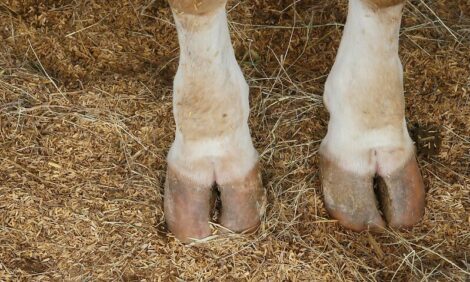



Weekly Overview: Growing Attention on Pigs and Their Environmental Impact
ANALYSIS - A UK study has highlighted areas where pig producers and pork processors should target their efforts to reduce their environmental impact. In the US, Seaboard Foods is using waste from its pig meat plant to make biodiesel to power its live animal and feed vehicles. A Danish study suggests more effort should be focused on cutting piglet mortality on organic farms. A first estimate has been made of the cost of Porcine Epidemic Diarrhoea virus (PEDv) to the US pig industry.Data has been published in the UK for 50 grocery products, including pork, showing areas where attention should be focused in terms of reducing environmental impacts.
The report, from WRAP, is published as part of the Product Sustainability Forum (for which WRAP provides the secretariat) and is intended to enable suppliers and retailers to access more easily data on the environmental impact of various groceries.
The 'hotspot' areas considered in the report are: waste, greenhouse gas (GHG) emissions, water impact, energy use and material risk. Each of these are examined within the context of agriculture, packaging, processing, retail and consumer.
Looking at pork specifically, three main hot-spots were identified: environment, waste and water use.
On environment, it was shown that pig feed (e.g. wheat, feed, barley and soybean meal) contributes the most to the carbon footprint of pig farming. Protein sources can include soy – which has been linked to deforestation. Other, less significant, sources of GHGs on farm are those arising from manure management and the use of energy in livestock housing.
Turning to waste, pig blood can be used to produce higher value products. Some abattoirs send Category 3 material direct to third party users, such as petfood, rather than rendering. Some 120,000 tonnes of pork are wasted in UK homes every year. Avoidable consumer food waste is around 93,000 tonnes.
Finally, water use during processing was found to be high at around 165 litres per pig, mainly due to use in cleaning and sterilisation.
In the US, Seaboard Foods has announced its Live Production Operations will be using vehicles run on biodiesel produced by the the company's affiliate, High Plains Bioenergy, from a variety of fats, including pork fat rendered at the nearby Seaboard Foods pork processing plant in Guymon, Oklahoma.
Looking further afield, with the consequences of climate change for the world's food production systems becoming increasingly clear, more needs to be done to capitalise on agriculture's potential to mitigate global warming, according to a new guidance document from the United Nations' Food and Agriculture Organization (FAO).
Progress in drawing up agricultural GHG mitigation plans - as well as in allocating financing to climate change projects in the agriculture sector - is falling short of what is needed, warns the FAO.
A study commissioned by the Danish Ministry of Food, Agriculture and Fisheries in 2011 revealed high piglet mortality in organic herds. Efforts should be made to improve survival, conclude the scientists behind the report.
A recently published follow-up study by Aarhus University and the Ministry shows that there is a need for a special effort in organic pig production, where mortality is higher than in conventional systems.
Changing topic, the total number of swine accessions and diagnostic case submissions testing positive for the Porcine Epidemic Diarrhoea (PED) virus in the US has increased by 31 in the most recent weekly report and now stands at 434.
According to US pig industry analyst, Steve Meyer, the disease may impact pig slaughter numbers, beginning in mid-December, by two to four per cent. He warns, however, that this is the best estimate he can reach from currently available data, which is limited.






